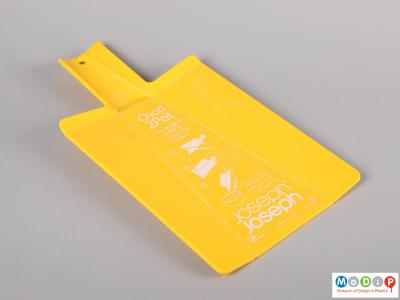Acronym and details: PP
Group: thermoplastic
Developed: from 1954; increase in use from 1976 when initial patents ran out; became fashionable in translucent sheet form in 1990s; now one of the most used plastics
Trade names: Propathene
Manufacturing process: blow moulding; extrusion (as a fibre); injection moulding
Cost: low
Colour: any
Transparency: translucent, but can have clarifying agents added making it transparent; also comes as clear film (modern cellophane)
Rigidity: rigid but flexible
Feel: varies
Smell: none
Other: can be moulded to create an integral hinge; can achieve reasonably glossy surface scratches with fingernail
Typical uses: chair shells and garden furniture; luggage; car bumper; petrol cans; food wrappings; microwaveable meal trays; margarine tubs; netting; household goods; carpets; packaging; rope
Degradation: relatively stable



